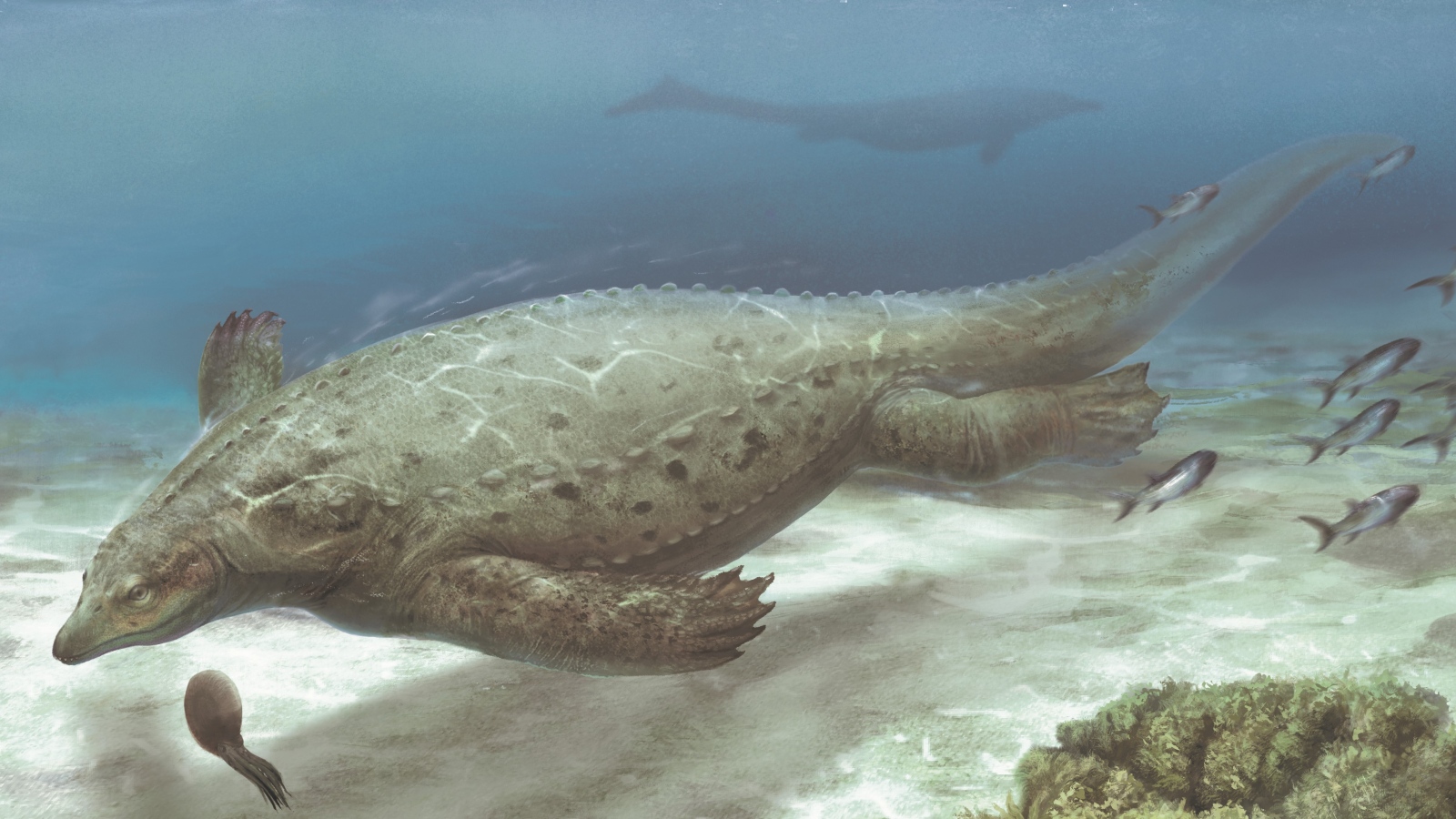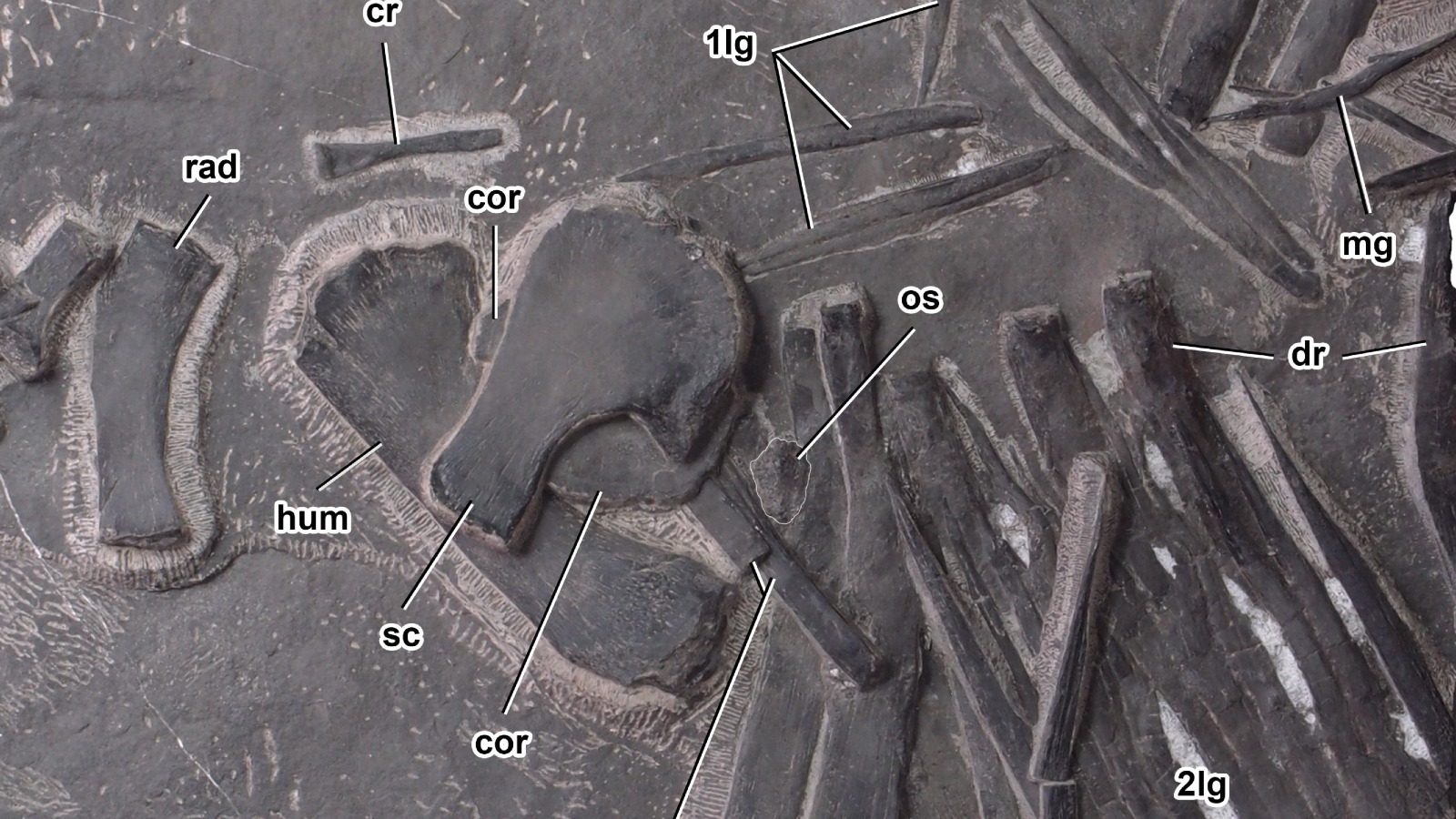Ancient human-size sea lizard rewrites history of early armored marine reptiles
The newly discovered species, Prosaurosphargis yingzishanensis, grew to around 5 feet long and was covered in bony scales called osteoderms.

An extinct, 250 million-year-old marine reptile that was covered in bony armor and swam in the shallow waters of what is now south China could rewrite the family tree of armored marine reptiles and hint at why they first emerged, a new study shows.
The newfound species, named Prosaurosphargis yingzishanensis, was identified from a partial skeleton first discovered in 2019 at Yingzishan quarry in China's Hubei Province. P. yingzishanensis belongs to the family Saurosphargidae, a group of armored marine reptiles with broadened dorsal ribs that made them appear much more stocky than other marine reptiles. (Sauorsphargidae is a combination of the Greek words for lizard, "sauros," and leatherback turtle, "sphargis.")
Researchers described P. yingzishanensis in a study published Aug. 8 in the journal Evolutionary Biology.
P. yingzishanensis likely grew to around 5 feet (1.5 meters) long and was covered in osteoderms — bony scales and plates found in many living reptiles, armored dinosaurs and some mouse tails. It was likely "one of the bigger marine reptiles" living in its ecosystem at the time, study lead author Andrzej Wolniewicz, a paleobiologist at Hefei University of Technology in China and the Polish Academy of Sciences, told Live Science in an email.
Until now, the oldest saurosphargids dated back to around 245 million years ago during the mid-Triassic period. Scientists don't know whether P. yingzishanensis was a direct ancestor to these later saurosphargids or a separate lineage, Wolniewicz said. But the overall body plan of the newly described species strongly hints that the entire group may have been previously misclassified, he added.

Saurosphargids have long been considered a sister family of the sauropterygians, a more diverse group of extinct marine reptiles including armored turtle-like creatures called placodonts and long-necked predators such as plesiosaurs.
Sign up for the Live Science daily newsletter now
Get the world’s most fascinating discoveries delivered straight to your inbox.
But the researchers noted a large number of similarities between P. yingzishanensis and some of the plesiosaur-like sauropterygians, which suggests the two groups may be more closely related than previously thought, Wolniewicz said. As a result, the study authors have proposed that the saurosphargids should be reclassified as a sub-group of sauropterygians.
The researchers also believe that sauropterygians and other groups of marine reptiles, such as ichthyosauromorphs, which include ichthyosaurs and thalattosaurs, may be more closely related to the clade Archelosauria — a group that includes living and extinct turtles and archosaurs, which include crocodilians and birds — than previously thought.
The wide variety of body armor across all these groups, excluding birds, also suggests that their bony plating was key to living in shallow water habitats, Wolniewicz said. As well as providing protection from predators, this heavy plating may have enabled marine reptiles to overcome issues with buoyancy by weighing them down and forage around the seafloor, where a majority of prey would be found, he added.
The researchers hope the region where the P. yingzishanensis fossil was discovered will reveal more ancient species that could bridge the gap between the ancient reptile groups and fill in further missing pieces in their evolutionary history.

Harry is a U.K.-based senior staff writer at Live Science. He studied marine biology at the University of Exeter before training to become a journalist. He covers a wide range of topics including space exploration, planetary science, space weather, climate change, animal behavior and paleontology. His recent work on the solar maximum won "best space submission" at the 2024 Aerospace Media Awards and was shortlisted in the "top scoop" category at the NCTJ Awards for Excellence in 2023. He also writes Live Science's weekly Earth from space series.









